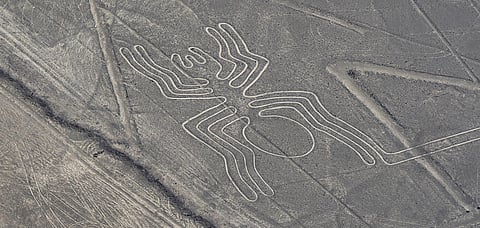
- Destinations
- Experiences
- Stay
- What's new
- Editor’s Picks
- Responsible Tourism
- CampaignsCampaigns
- Subscribe

The incredibly large, Nazca Lines of Peru has always been a mysterious wonder, a sight best viewed from the air. Located near Lima, these impressive geometric figures are etched on a coastal desert. Recently, a team of Japenese researchers have found 143 new figures using satellite photography, 3D imaging and artificial intelligence. They portray animal and human figures like camels, llamas, cats and snakes, while some are more abstract, appearing as geometric shapes. Already, images of a monkey, hummingbird, and spider are quite famous. The research group, hailing from Yamagata University, say that the largest figures are around 300 feet long and have been around from 500BCE to 500CE. These sketches were made by scratching the dark upper layer to reveal the white sand underneath. The mystery, however, lies in its purpose as researchers are not able to figure out why they were made in the first place. Some researchers believe them to be a part of a ritual or a place of religious ceremony (broken ceramics were found around). Simpler figures have been identified as markers for direction or travel. Wilder theories suggest that these figures were a work of aliens, of course. However, regardless of its origin, it is imperative that the site is protected and seen by the public, to protect it from damage. The site is already a Unesco World Heritage Site for its cultural and religious importance and necessary for our understanding of pre-Columbian South America.
